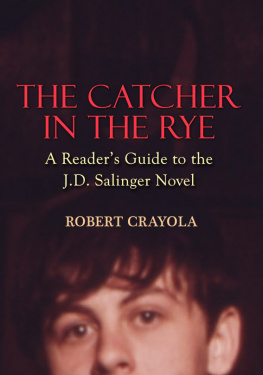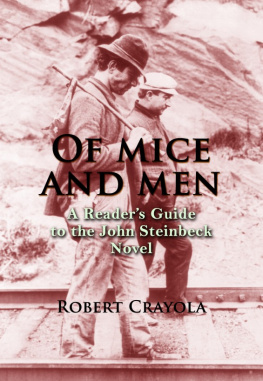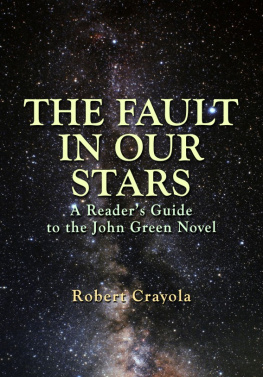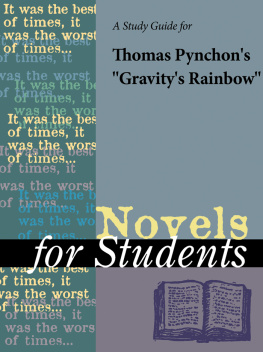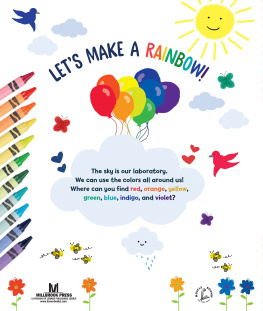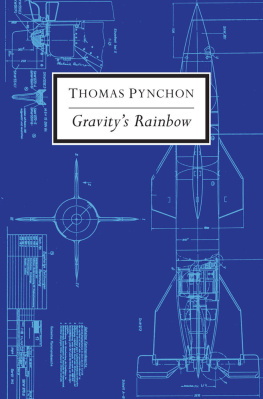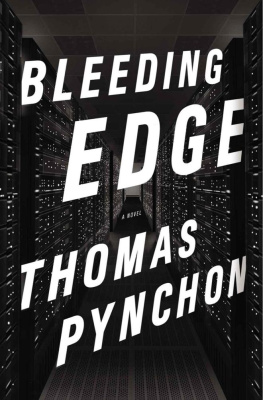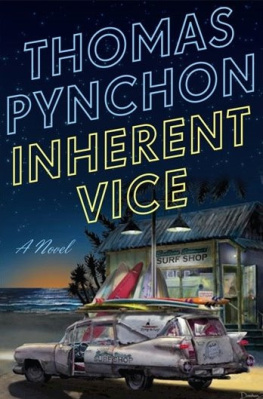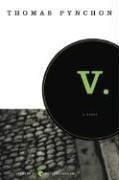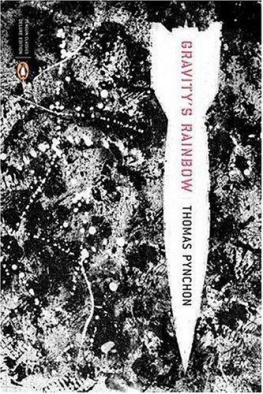Robert Crayola - The Gravity’s Rainbow Handbook: A Key to the Thomas Pynchon Novel
Here you can read online Robert Crayola - The Gravity’s Rainbow Handbook: A Key to the Thomas Pynchon Novel full text of the book (entire story) in english for free. Download pdf and epub, get meaning, cover and reviews about this ebook. year: 0, genre: Art. Description of the work, (preface) as well as reviews are available. Best literature library LitArk.com created for fans of good reading and offers a wide selection of genres:
Romance novel
Science fiction
Adventure
Detective
Science
History
Home and family
Prose
Art
Politics
Computer
Non-fiction
Religion
Business
Children
Humor
Choose a favorite category and find really read worthwhile books. Enjoy immersion in the world of imagination, feel the emotions of the characters or learn something new for yourself, make an fascinating discovery.
- Book:The Gravity’s Rainbow Handbook: A Key to the Thomas Pynchon Novel
- Author:
- Genre:
- Year:0
- Rating:4 / 5
- Favourites:Add to favourites
- Your mark:
- 80
- 1
- 2
- 3
- 4
- 5
The Gravity’s Rainbow Handbook: A Key to the Thomas Pynchon Novel: summary, description and annotation
We offer to read an annotation, description, summary or preface (depends on what the author of the book "The Gravity’s Rainbow Handbook: A Key to the Thomas Pynchon Novel" wrote himself). If you haven't found the necessary information about the book — write in the comments, we will try to find it.
The Gravity’s Rainbow Handbook: A Key to the Thomas Pynchon Novel — read online for free the complete book (whole text) full work
Below is the text of the book, divided by pages. System saving the place of the last page read, allows you to conveniently read the book "The Gravity’s Rainbow Handbook: A Key to the Thomas Pynchon Novel" online for free, without having to search again every time where you left off. Put a bookmark, and you can go to the page where you finished reading at any time.
Font size:
Interval:
Bookmark:
The Gravity's Rainbow Handbook:
A Key to the Thomas Pynchon Novel
by Robert Crayola
Smashwords Edition
Copyright 2015 Robert Crayola
https://www.smashwords.com/profile/view/robertcrayola
****
CONTENTS
Gravity's Rainbow, however youapproach it, is a difficult book. Widely regarded as a classic, newreaders may read fifty or a hundred pages with feelings ofconfusion and disgust, wonder why the book is so widelyesteemed, and put it back on the shelf to gather dust. This isunfortunate. With some persistence and a little help (which thisguide hopes to provide), Gravity's Rainbow can be one of themost rewarding experiences available to a reader. Imagine a storythat combines Ulysses, Catch-22, The Canterbury Tales, NakedLunch, Tropic of Cancer, Cat's Cradle, Lolita, Under the Volcano,Macbeth, and On the Road into one book. That is thescope of what Pynchon creates in Gravity's Rainbow. And likeUlysses, it seems to contain every experience available to ahuman being. This guide will give you the tools to navigate thisincredible story. But before we get into the details of the textitself, let's look at the challenges that the book presents to thenew reader.
First, there is a huge cast of characters. Itis often unclear who is speaking, and to whom. People disappear anddon't show up again for hundreds of pages. There is often littledescription of a character, or descriptions are scatteredthroughout the book, requiring multiple readings to get the fullflavor of who these people are. To help you figure out who is who,I have provided a detailed listing of every major character in thebook.
A second challenge of this novel involvescontext. The book demands a great knowledge of history, geography,science, mathematics, music, psychology, pop culture, and theoccult. The amount of knowledge is almost overwhelming.Fortunately, there are annotations available to help you identifyany specific detail (Steven C. Weisenburger's book andpynchonwiki.com are both excellent resources). However, I hope toshow that most of the details included in the novel areimpressionistic, helping to paint a picture, but ultimatelynot essential for understanding the book as a whole. In fact, theamount of information required to get the gist of the book is notmuch larger than any novel. It only requires knowing what isessential so you can see the bigger picture Pynchon has carved out.I hope to give you that information in this guide.
Another challenge the book poses is thecontent. This is not a book for the prudish. It contains profanity,racism, graphic violence, torture, pedophilia, coprophilia,sadomasochism, and a seemingly infinite number of sex scenes. Ifthese depictions put you off, this might not be the book for you.That being said, Pynchon doesn't present these scenes thoughtlesslyor admiringly. They are included with a purpose. The book takesplace at the end of World War II, and Europe is in a state ofchaos. As political boundaries are dissolved and redefined, so tooare personal boundaries. Almost every character makes poor choicesas the stress and pain of war tears them apart. This is not toexcuse or justify their actions, but to help see how people then(and now) continue to live destructively. Also, for all itsdarkness, Gravity's Rainbow contains nobility, compassion,self-sacrifice, and forgiveness. We will look further at the senseof doom that many characters experience, and how it leads tobizarre and painful situations, and for some, a kind ofredemption.
And if these hurdles weren't enough to deterthe new reader, the "postmodern" aspect of the book can leave manypeople confused or displeased. Postmodernism in literatureis a movement that attempts to deconstruct how the narrative itselffunctions. This shows up throughout Gravity's Rainbow asPynchon intrudes his voice into the text, parodies his own efforts,and questions the reliability of any perspective. Since manyof the characters are intoxicated in the book (as Pynchonsupposedly was during much of the book's writing), this also worksits way into the storytelling. Everything is questionable. A senseof paranoia pervades the landscape, and there are no easy answersabout who or what to believe.
With these warnings in mind, we are ready tostart unraveling Gravity's Rainbow. Think of it as climbingthe Mt. Everest of novels. It's a very steep and thorny path to thetop, but once we arrive, I promise you the view will be amazing.This is a book that gets better with every reading and every detailyou add to your understanding.
You may use this guide before or afterreading Gravity's Rainbow. I encourage you to use itbeforehand. Although it gives away all major plot details, it willsave you from hours of frustration and confusion.
Let's begin by looking at the book's author,Thomas Pynchon.
AUTHOR: Thomas Pynchon is anotoriously private author. The details of his life are limited,particularly his later years. However, certain facts are on recordand should be considered when approaching his works.
Born Thomas Ruggles Pynchon, Jr. on May 8,1937, Pynchon's family previously had another author in itshistory. This was William Pynchon (1590 1662), an early colonistwho published a religious text, The Meritorious Price of OurRedemption, which caused controversy and became the New World'sfirst banned book.
Thomas Pynchon was born and raised on LongIsland, New York. He graduated high school at 16 with highachievements, going on to Cornell University to study engineeringphysics. He dropped out of school to serve two years in the U.S.Navy, returning to Cornell to receive a degree in English. Hisinterest in storytelling was present as early as high school, andone of his stranger collaborations in college was a science-fictionmusical that depicts the computer corporation IBM ruling theworld.
With his engineering knowledge and literarybackground, Pynchon worked in Seattle as a technical writer forBoeing in the early 1960s. He began work on his first novel at thistime, V. Published in 1963, V. contains themesPynchon would employ throughout his career, including howtechnology and organizations affect our humanity. The book was wellreceived and remains a remarkable achievement for a man in hismid-20s.
Following V. we know less and lessabout Pynchon's personal life. We know he lived in Manhattan Beach,California, for much of the 1960s, and that he was working onseveral books at once. The next work to make an appearance wasThe Crying of Lot 49 in 1966. It is a short novel ofconspiracy and paranoia, and one of Pynchon's more accessiblebooks.
Aside from short essays and minor material,Pynchon did not publish again until 1973 with Gravity'sRainbow. It won the National Book Award and secured Pynchon'splace as a significant author, but with a sense of reservation. Thebook's difficulty and more explicit sections frustrated somereaders, and prevented the book from receiving a PulitzerPrize.
Pynchon's next two books were greeted lessenthusiastically. Slow Learner, a collection of earlystories, and Vineland, a novel, seemed to lack the epicscale that Pynchon had previously displayed. However, with the 1997publication of Mason & Dixon, he showed that he couldstill create a work on the scale of Gravity's Rainbow, andsome critics think Mason & Dixon is his best work. As ifthat wasn't enough, Pynchon followed this book with Against theDay in 2006. His longest work to date at around 1100 pages, Iconsider it the third of Pynchon's "great monsters," and one of thegreatest books ever written.
Pynchon's two most recent books are a littlemore lightweight. Inherent Vice (2009) is almost written asa mainstream novel, as though Pynchon was aware of his owndifficulties and set out to write a bestseller that anyone couldpick up. It was made into a movie by P.T. Anderson in 2014. Yeteven "lightweight" Pynchon is intricate, and there is much toadmire in
Next pageFont size:
Interval:
Bookmark:
Similar books «The Gravity’s Rainbow Handbook: A Key to the Thomas Pynchon Novel»
Look at similar books to The Gravity’s Rainbow Handbook: A Key to the Thomas Pynchon Novel. We have selected literature similar in name and meaning in the hope of providing readers with more options to find new, interesting, not yet read works.
Discussion, reviews of the book The Gravity’s Rainbow Handbook: A Key to the Thomas Pynchon Novel and just readers' own opinions. Leave your comments, write what you think about the work, its meaning or the main characters. Specify what exactly you liked and what you didn't like, and why you think so.


